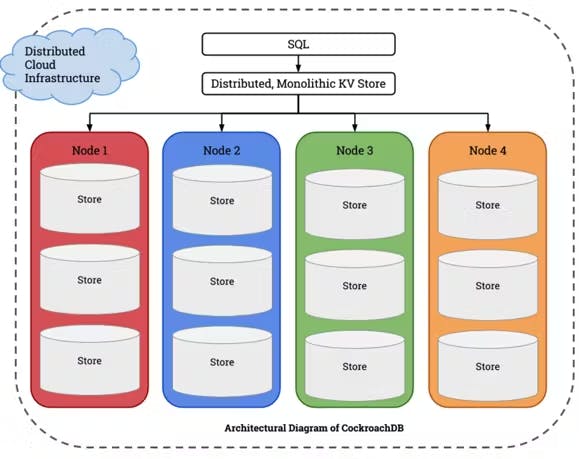By Karan Ashok Luniya
TL;DR: CockroachDB and Apache Cassandra are both scalable, fault-tolerant distributed databases, but they serve different needs. CockroachDB excels in transactional consistency and SQL flexibility, while Cassandra shines with unmatched availability and linear scalability. This guide compares them across consistency, scalability, operational complexity, and real-world performance to help you make an informed choice.
In today's data-driven world, modern applications often need a database that can handle scale, fault tolerance, and availability across geographies. Among the many choices available, CockroachDB and Apache Cassandra stand out as two powerful, yet fundamentally different, distributed databases. Selecting the right one can have significant implications for your system's performance, consistency, and development complexity.
This article explores the core differences between CockroachDB and Apache Cassandra, examining how their technical architectures influence real-world use cases. Whether you’re designing a globally distributed SaaS platform or managing time-series data from IoT devices, understanding these systems’ trade-offs is key to making the right decision.
Architectural Philosophies: SQL vs NoSQL
At the heart of the difference lies their architectural philosophy:
- CockroachDB is a distributed SQL database inspired by Google Spanner. It offers full ACID compliance, strong consistency, and a familiar relational model. It's designed to feel like PostgreSQL but scale globally.
- Apache Cassandra is a NoSQL wide-column store, originally developed at Facebook. Its design emphasizes high availability, massive scalability, and tunable consistency.
Consistency and Availability (CAP Theorem)
CockroachDB and Cassandra fall on different sides of the CAP theorem:
- CockroachDB is a CP system (Consistent and Partition-tolerant). It uses the Raft consensus algorithm to ensure consistency across nodes. Transactions are serializable, and writes require quorum, guaranteeing correctness but potentially rejecting operations during network partitions.
- Cassandra is an AP system (Available and Partition-tolerant) by default. It uses eventual consistency and allows you to tune consistency per operation (e.g., ONE, QUORUM, ALL). This makes it highly available—writes will succeed even during partitions—but you may need to reconcile stale data later.
Use Cases Shaped by Consistency
- Use CockroachDB when your application requires strong consistency and transactional guarantees, such as:
- Financial systems
- Inventory and order management
- Identity and access control systems
- Use Cassandra for high-availability and high-throughput use cases where eventual consistency is acceptable:
- Time-series data
- Logging and telemetry
- Social media activity feeds
Data Model and Query Capabilities
- CockroachDB supports full SQL (joins, subqueries, indexes, etc.) and adheres closely to PostgreSQL. It’s ideal for evolving schemas and complex queries.
- Cassandra uses CQL (Cassandra Query Language), which resembles SQL but lacks joins and multi-table operations. It favors denormalized, query-driven schema design and is optimized for primary-key lookups.
Scalability and Performance
Both systems scale horizontally, but in different ways:
- Cassandra excels in linear scalability and can support thousands of nodes. Netflix has deployed Cassandra clusters with over 300 nodes, and Apple has reportedly operated clusters with more than 75,000 nodes. At scale, Cassandra can handle millions of operations per second.
- CockroachDB supports scaling to hundreds of nodes and handles tens of thousands of transactions per second (TPS) under heavy workloads. In a 2022 benchmark, a 3-region CockroachDB cluster achieved over 10,000 TPS with sub-second latency while maintaining serializable isolation.
Deployment and Operational Complexity
- CockroachDB is deployed as a single binary, with built-in automation for rebalancing, repairs, and monitoring. It supports rolling upgrades and is easier to manage for smaller teams.
- Cassandra is more mature operationally, with proven deployments at massive scale. However, it requires deeper tuning and familiarity with JVM, compaction, and repair processes.
Final Thoughts
Both CockroachDB and Apache Cassandra are exceptional tools in their own right. Choosing between them is not about which one is better, but about which one aligns with your application's requirements.
- If your application prioritizes availability, scale, and simple data access, Cassandra is a battle-tested solution.
- If you need relational consistency, ACID transactions, and SQL query flexibility, CockroachDB is likely a better fit.
In some architectures, you may even use both: Cassandra for ingesting high-volume data, and CockroachDB for managing transactional workloads and business logic.
Whichever you choose, understanding these fundamental differences will help you build systems that are both robust and scalable from day one.
Join the Conversation
Have experience scaling CockroachDB or Cassandra? What trade-offs have you encountered in production? Share your story in the comments below —I’d love to hear your perspective.


